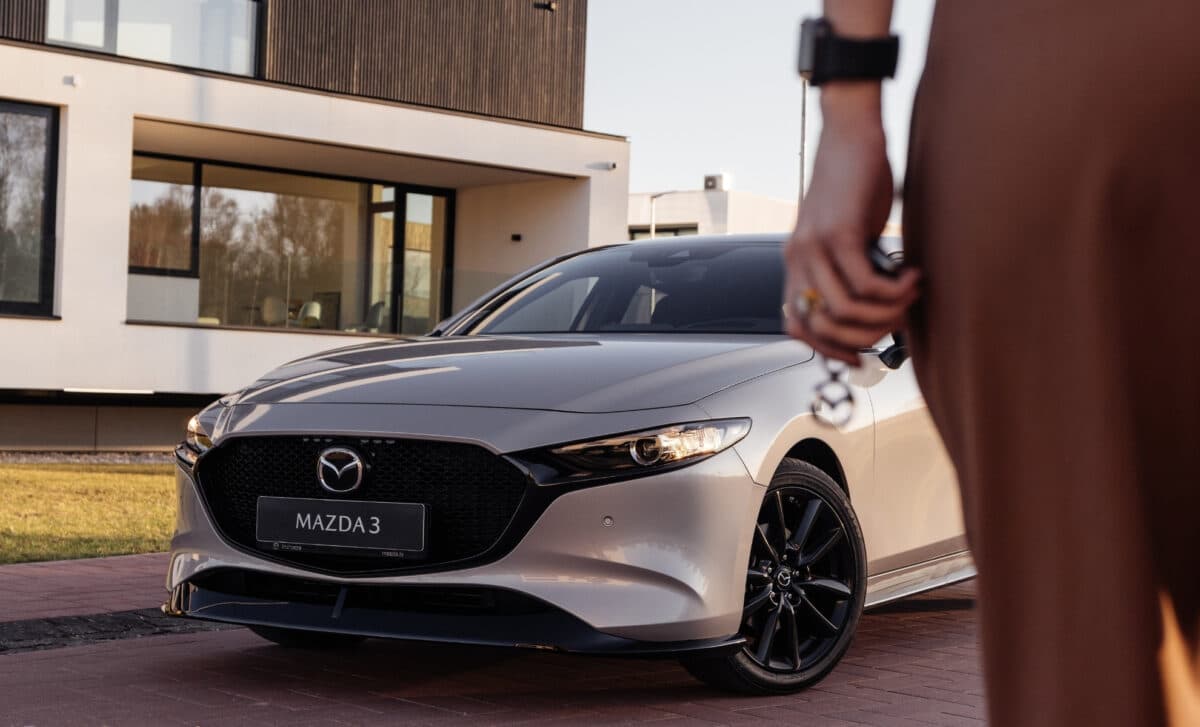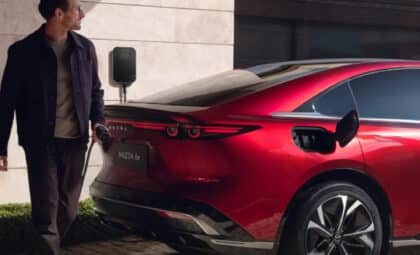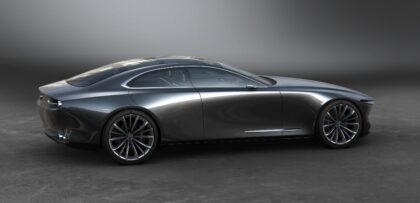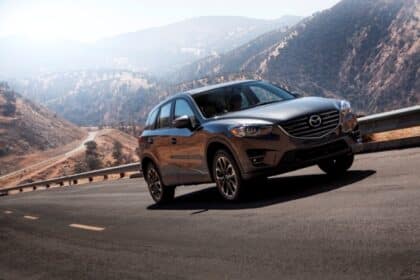New filings and internal shifts hint that the iconic Mazda 3 could return in 2026 as the Mazda3e—an all-electric model built in partnership with China’s Changan under the Deepal sub-brand.
If confirmed, this would mark a significant shift for the Hiroshima-based automaker, potentially phasing out in-house development of its compact series in favor of rebadging a model from its Chinese joint venture. The move reflects Mazda’s broader reorientation toward electrification and cost-sharing strategies, and it would position the new 3e in direct competition with electric sedans like the Hyundai Ioniq 6 and BYD Seal—but only outside of North America.
A Name Change, a Platform Swap
The first clear indicator of a major shift came from recent trademark filings for the name “Mazda3e” in several key global markets including Australia, the United Kingdom, and the European Union. As reported by Carscoops, these filings suggest the automaker is laying groundwork for a new electric model, likely based on the Deepal L06 platform developed by Changan, Mazda’s Chinese partner.
This would not be the first time Mazda used Changan’s architecture. In select markets such as Europe and Australia, the current Mazda 6 has already been replaced by the Deepal-based Mazda 6e (also called EZ-6), bypassing North America entirely. The L06 could follow the same path, giving birth to a new Mazda3e with little to no engineering input from Japan.
Rather than designing a successor to the current Mazda 3 in-house, the company appears to be opting for a more pragmatic approach: repurposing an existing EV platform from its Chinese affiliate to control development costs and accelerate electrification plans.

Dual Powertrains and Substantial Range
If the Mazda3e indeed mirrors the Deepal L06, it would come with two distinct drivetrains. One version is a range-extended hybrid (EREV) that combines a naturally aspirated 1.5-liter engine producing 97 horsepower with a 28.39 kWh LFP battery. This setup powers a rear-mounted 190 kW (255 hp) electric motor and delivers an EV-only range of 180 km under the WLTP standard. Fuel consumption for the engine is rated at 4.38 liters per 100 km, or about 54 mpg.
The other, fully electric variant uses a single rear-mounted motor generating 268 horsepower (200 kW). According to the same source, this version offers two battery options—56 kWh and 69 kWh—with the larger one delivering a maximum range of 416 miles (670 km), which places it squarely in the same category as other long-range electric sedans.
While these specifications originate from the Deepal L06, a model unveiled by the Chongqing-based Changan Automobile Group, there’s growing evidence that a Mazda-badged variant may be positioned similarly—especially since the dimensions of the L06 suggest a much larger vehicle than the current Mazda 3.
More Room, More Tech, Less Mazda
The switch to a Deepal platform would bring significant changes to the Mazda 3’s interior and footprint. At 190 inches (4,830 mm) in length, the base model underpinning the potential Mazda3e is substantially longer than the existing Mazda 3, moving the compact into a larger segment. This would help address one of the long-standing criticisms of the current 3: its cramped rear passenger space.
Inside, the transformation continues. The Deepal-derived layout leans heavily on digital interfaces, with multiple screens and a 50-inch augmented reality head-up display powered by a 3-nanometre automotive-grade cockpit chip. The new sedan will also integrate Level 2+ driver assistance features, made possible in part by standard LiDAR sensors.
The design retains some traces of Mazda’s “Kodo” design language—particularly in the sculpted panels and front fascia—but key elements such as the window glass, doors, and roofline appear to remain faithful to the Chinese donor model. This includes practical additions like active grille shutters and a full-width rear light bar, along with the less subtle placement of the LiDAR unit above the windshield.
Mazda has not confirmed whether the current 3 will receive a direct successor developed in Japan, or if the brand is fully pivoting to a rebadged Chinese model.









